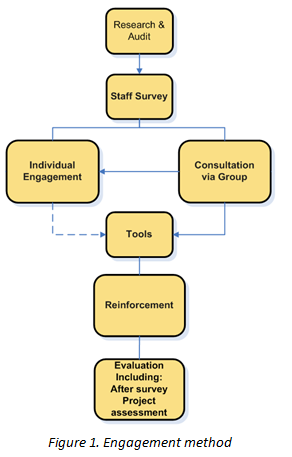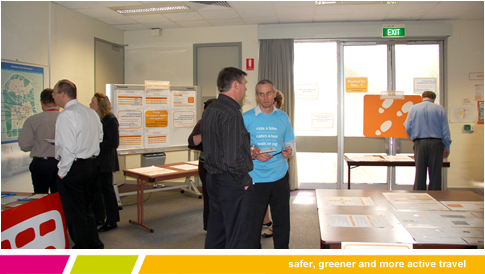
DTEI
Department for Transport, Energy and Infrastructure 2010: Harnessing a change moment
The context
Prior to 2010, approximately 800 staff from the Department for Transport, Energy & Infrastructure (DTEI) worked at a site in suburban Walkerville. This site had a large amount of free car parking, providing staff with an easy option to drive to work. When DTEI relocated staff from Walkerville to the Adelaide CBD, staff were concerned about the change. This provided an opportunity for staff to leave the car at home, avoiding parking costs and the complications of driving to a central city location.
The process
As part of the relocation, DTEI undertook a process to manage the change in staff commuting habits, designed to support employees in choosing safer, greener and more active travel. This process provided all employees being relocated with access to individually-tailored commuting advice, tools and support to assist them in making informed travel choices when commuting to their new workplace.

Prior to the move, employees were surveyed about their travel concerns and needs regarding the move to the CBD. Nearly half of the survey respondents indicated they were at least partially concerned with their travel options. In particular, many staff requested information about parking costs and locations. The survey results were used to develop the sessions and tools offered throughout the relocation process.
Group sessions – An informal event (BBQ) was held so staff could register their interest in attending specific information sessions and workshops to assist staff to overcome personal travel barriers. Examples of these sessions include public transport information sessions, commuter cycling information sessions and practical cycle safety courses.
Individual engagement – Staff were also offered a one-on-one consultation. This provided the opportunity to openly talk through their frustrations associated with travelling to the new site and work through a problem solving process to explore travel options and determine the best journey to work for the individual.
Tools – Resources were provided to individuals assist decision making for the journey to work. Some of these tools included personalised journey plans for public transport, cycling or walking, cycling or walking maps, public transport information and car parking costs/locations.
Reinforcement – Follow up emails/phone calls were provided to reinforce and support staff in their commuting choice.
The outcomes
A follow up survey of those staff who sought assistance showed that their level of concern with their travel options dropped significantly following the move to the CBD, with 75% of staff indicating they were now partially or very comfortable. Just over half of the respondents indicated that the services provided to them made them feel more comfortable. The most well received services were the one-on-one sessions, the public transport journey plans and the car parking information. The car parking information in particular encouraged many staff to decide that driving every day to work was not going to be cost effective, and took up other modes of transport. Staff have particularly embraced active travel, with over 100 staff regularly using the building’s bike parking and locker facilities to support them cycling or walking to work.

Difficult to read?
Zoom in or out by holding down the "CTRL" key and pressing - or + key
To RESET, see your Internet Browser viewing options



